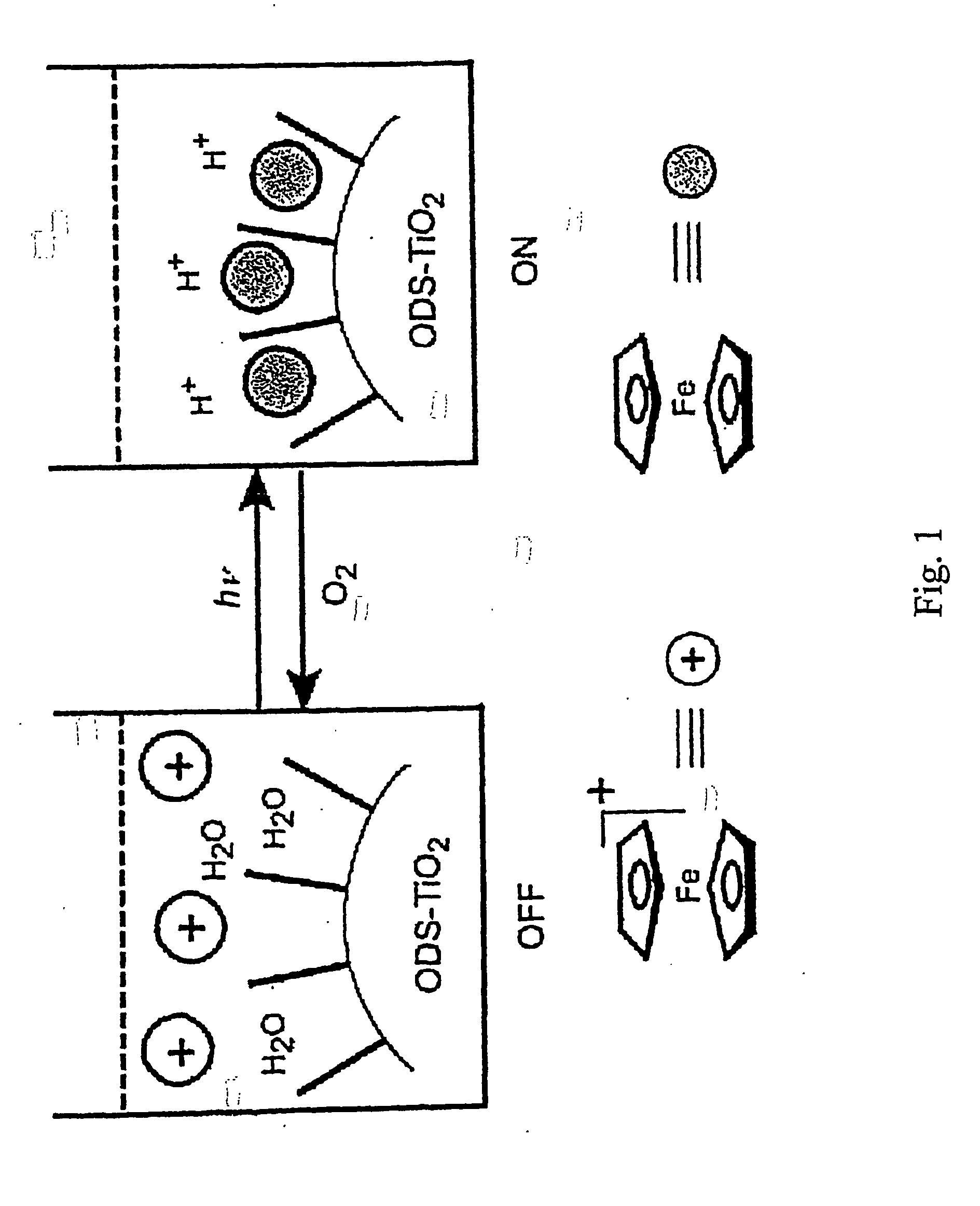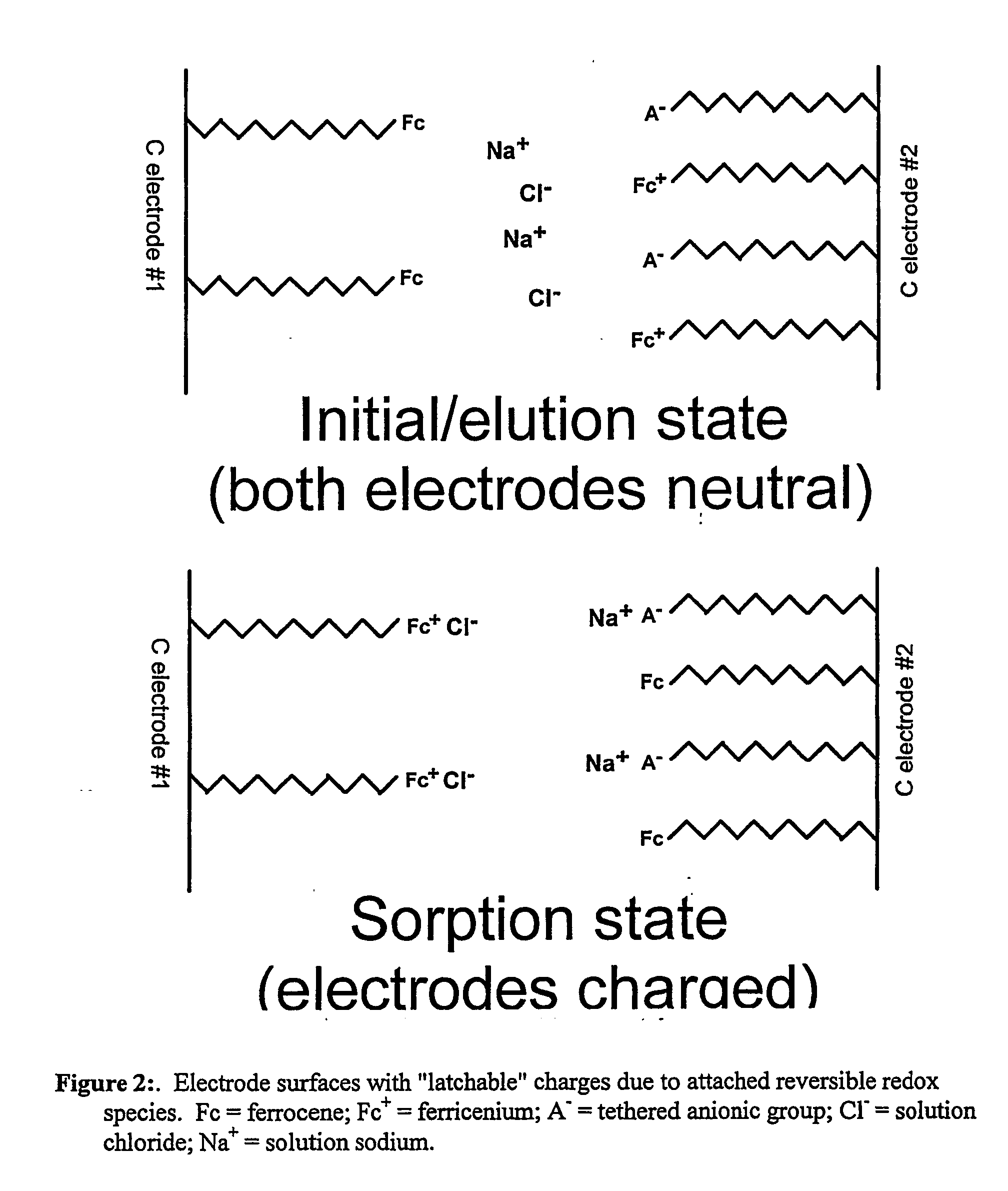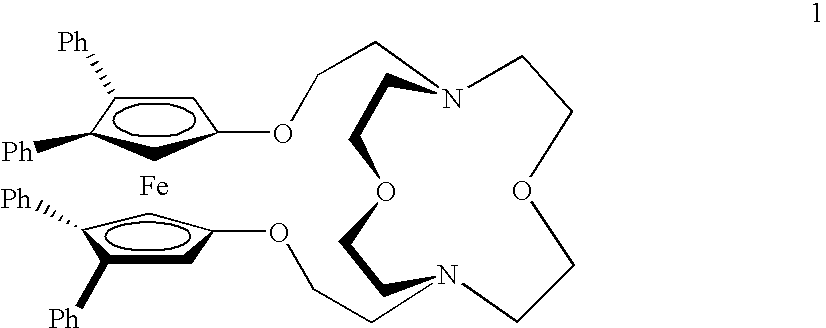Redox-switchable materials
a technology of redox-switchable materials and redox-active moiety, which is applied in the field of materials, can solve the problems of difficult and expensive release or removal of solute from the adsorber or binding agent to recover the solute and/or reuse the adsorber or binding agent, and waste of energy or materials, etc., to achieve the effect of improving the efficiency of solute adsorption and/or releas
- Summary
- Abstract
- Description
- Claims
- Application Information
AI Technical Summary
Benefits of technology
Problems solved by technology
Method used
Image
Examples
Embodiment Construction
[0043] The present invention relates to materials which are redox-switchable. These materials comprise at least one redox-active species or moiety which is switchable between a reduced state and at least one oxidized state. A redox-active moiety or species contains one or more chemical functions or groups that can be reduced and oxidized, i.e. can accept electrons to be reduced and donate or transfer electrons to be oxidized. The term oxidation / reduction state of the redox-active moiety (or other materials or species) refers to whether the moiety is oxidized or reduced. For a given redox-active species there is a reduced state and at least one oxidized state and certain redox-active species may have more than one oxidized state, dependent upon the number of electrons transferred to achieve the oxidized state.
[0044] The redox-switchable materials of this invention may in addition function for adsorption, complexation or bonding to another chemical species. Most simply, the oxidation...
PUM
| Property | Measurement | Unit |
|---|---|---|
| pH | aaaaa | aaaaa |
| hydrophobic | aaaaa | aaaaa |
| semiconductor | aaaaa | aaaaa |
Abstract
Description
Claims
Application Information
 Login to View More
Login to View More - R&D
- Intellectual Property
- Life Sciences
- Materials
- Tech Scout
- Unparalleled Data Quality
- Higher Quality Content
- 60% Fewer Hallucinations
Browse by: Latest US Patents, China's latest patents, Technical Efficacy Thesaurus, Application Domain, Technology Topic, Popular Technical Reports.
© 2025 PatSnap. All rights reserved.Legal|Privacy policy|Modern Slavery Act Transparency Statement|Sitemap|About US| Contact US: help@patsnap.com



